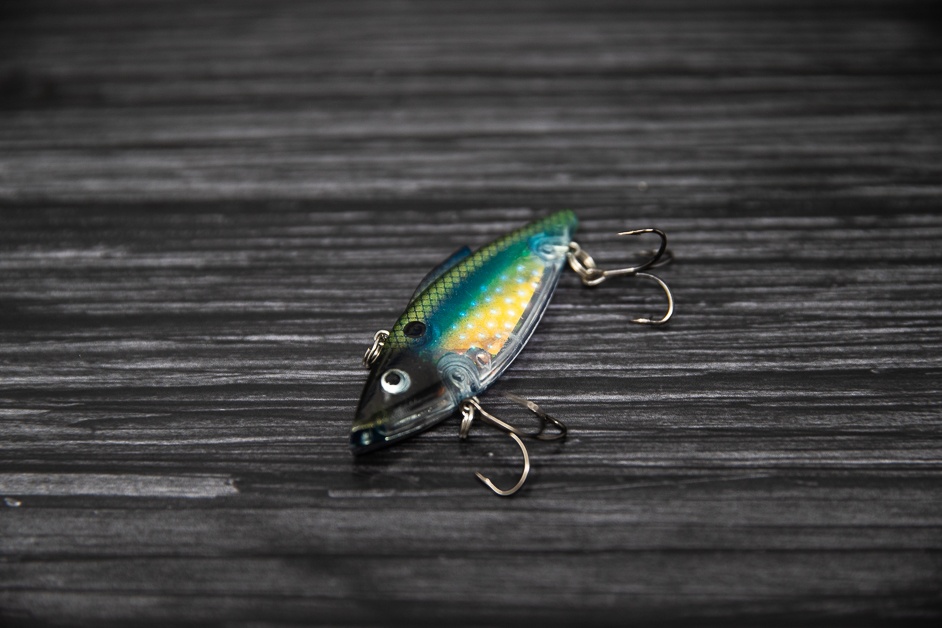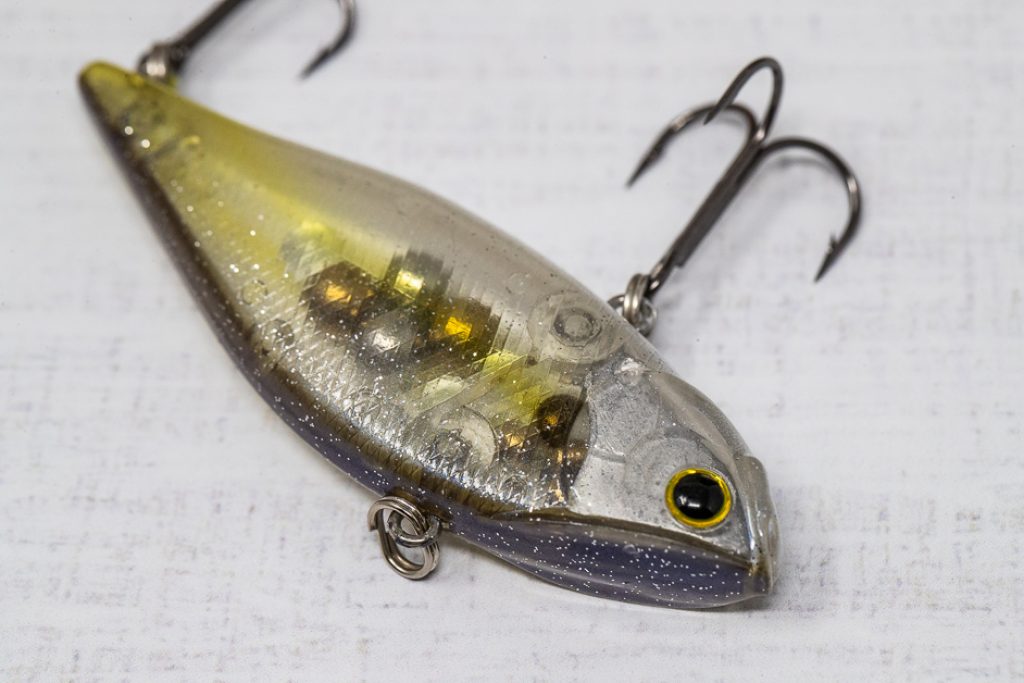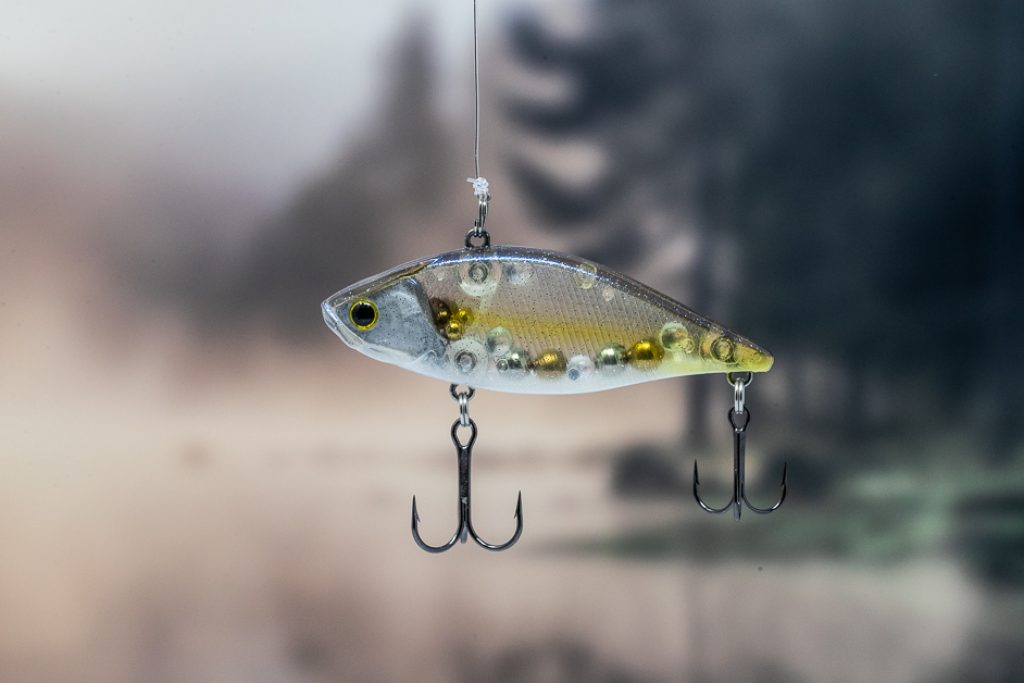
Every angler knows that the right choice of lures and baits can have a telling impact on a day’s fishing haul. When it comes to bass fishing, a lipless crankbait is a fantastic asset to possess that can increase fun and productivity.
This ultimate guide to fishing a lipless crankbait for bass will tackle the following FAQs;
- What are lipless crankbaits?
- When should lipless crankbaits be used?
- How should lipless crankbaits be used?
- What are the best lipless crankbaits on the market?
- What setups support lipless crankbaits?
Cast your eyes to the info below and you’ll be a better angler in no time.
What is a Lipless Crankbait?
Lipless crankbaits are an extremely popular type of lure that are primarily used to locate and engage fish when fishing in shallow waters. They are additionally known as traps, rattle baits, vibe cranks, and various other names. While used for catching various species of fish, bass fishing is one of the most common activities that utilize their capabilities.
The lipless crankbaits are characterized by flat sides, two treble hooks, and a wobble movement that replicates the natural movement of a live fish. In many cases, they also feature an internal metal weight that knocks against the sides to create noise and vibration. This makes them very versatile, as well as efficient at attracting predatory fish like bass.
Lipless crankbaits are immensely popular and will feature in the arsenal of almost every bass angler in the country. They are lightweight solutions, particularly in comparison to deep diving crankbaits, and are excellent at covering large areas of shallow waters.
Crankbaits are an ideal tool for scouting out fish and finding exactly where they are situated under the surface. Crucially, they entice bass with far greater effectiveness than many alternative baits on the market due to a large ‘strike zone’ and instant attraction to a predator’s natural instincts.
Due to an extensive range of colors, sizes, and styles, it is possible to tailor your lipless crankbaits and setup to match your preferences to enjoy a perfect day’s fishing every single time.
Best Lipless Crankbaits Setup
Lipless crankbaits can become an essential feature of your bass fishing in shallow waters setup. Nonetheless, their full potential can only be unlocked if they are successfully integrated with the other key elements. The versatility of the lures means that different anglers will give you contrasting opinions in alignment with their preferences. Finding a setup that suits you is vital.
Suitable rods for lipless crankbaits bass fishing
The type of rods used for lipless crankbaits bass fishing may vary depending on where you plan to fish. If fishing in grassy areas, a heavy rod will be required. For more open spaces, a medium-weighted rod will probably suffice.
Rod length is a key component to consider with 7’ and 8’ rods standing out as the obvious choices due to their long casts. This is particularly beneficial with shallow lipless crankbaits because a short cast won’t give you enough time during the retrieval to attract a strike
Moderate action rods are a great option when avoiding grassy areas too due to the slow roll and the fact that they will help you during the fight that follows a bite.
Suitable reels for lipless crankbaits bass fishing
While the choice of rods is open to debate, it is almost universally accepted that high-speed reels are the best solution for lipless crankbaits and bass fishing. A reel that features a 6.1:1 ratio or better is regularly advised.
At the 6.1:1 ratio, you will be able to keep the bait in the strike zone for a longer duration. However, opting for a 7.3:1 high-speed reel will support long casts and deliver retrieval capabilities as soon as your lure hits the water.
While a small percentage of anglers will drop slightly below 6.1:1, most agree that this is the minimum needed for a practical bass fishing experience.
Suitable lines for lipless crankbaits bass fishing
The wrong fishing line will spell disaster for your bass fishing setup, regardless of how great the rod, reel, and crankbaits are. Fluorocarbon line offers abrasion resistance properties and a low stretch, which makes it the ideal solution.
A heavy line of between 15lbs and 20lbs will usually work best, although you must ensure that this is matched to your rod and reel choices. Alternatively, braided lines can be selected when matched with a moderate, parabolic action rod.
Monofilament can be used instead of fluorocarbon lines, but only if the rod tip is quite stiff. This will allow you to hook a fish and keep it hooked during the battle.
How to Fish Lipless Crankbaits
The versatility of lipless crankbaits means they can be used in a variety of ways too. They can actually be used at any depth, but most anglers choose a range of 5’ to 10’.
Lipless crankbaits will naturally move vertically with excellent accuracy, thus enabling you to create a large strike zone, especially when deploying a jolted retrieve. When fishing in the shallows, you can use a steady and slow retrieval like you would use a shallow diving crankbait.
A lipless crankbait lure is also suited to retrievals over the top of lily pads or through vegetation. You could use the steady reel action that would be used for deep diving crankbaits, or opt for a less predictable retrieval. With a little practice, you will be capable of covering various depths with this strategy by using the weight of the lure and the line to your advantage.
Here are some additional simple steps to consider throughout the different seasons;
- In spring, employ a steady stop-and-go retrieval.
- In summer, use a faster retrieval and slightly greater depth.
- In fall, use fast retrievals and a white lure.
- In winter, opt for a slower speed.
- In all seasons, don’t be afraid to use varying actions.
Bass are known to engage with their predatory behaviors throughout the year. Another popular technique is to lift your rod tip to a 30-degree angle, thus creating a slack line and allowing the crankbait to “bounce” through the water as you retrieve it.
When to Use Lipless Crankbaits
Lipless crankbaits are an ideal choice when targeting suspended fish and shallow bass. They offer an extensive range of impressive attributes, including but not limited to;
- Their versatility and general ability to fit any bass fishing setup allow anglers to fish in any part of the water column.
- As long as your technique is adapted, lipless crankbaits for bass fishing can be used in all seasons.
- Varied retrieves make them the perfect lure for searching large areas to locate where the activity will happen.
- The sound made underwater is fairly high-pitched, thus luring fish out from the grass and other hiding spots.
- They are incredibly reliable once you receive the strike, giving you a better chance of success in the subsequent battle.
As mentioned, the great thing about lipless crankbaits is that they can be used in any season and under any weather conditions. With the right setup, you can fish in grassy areas or open spaces. Thanks to the fact you’ll spend little time on the bottom of the lake, snagging is only a rare concern too.
However, it’s the ability to be ripped through vegetation with ease that makes them great for luring bass out of hiding. Whichever setting you find yourself in, you must choose a bold color that won’t get lost in the vegetation.
The easier question, then, might be when can’t they be used for bass fishing in shallow waters. And the answer is never.
Best Lipless Crankbaits
Given their versatility, it is no surprise to learn that the marketplace is blessed with hundreds of lipless crankbaits and lure designs. Below are our recommendations of the best lipless crankbait lures on the market!









